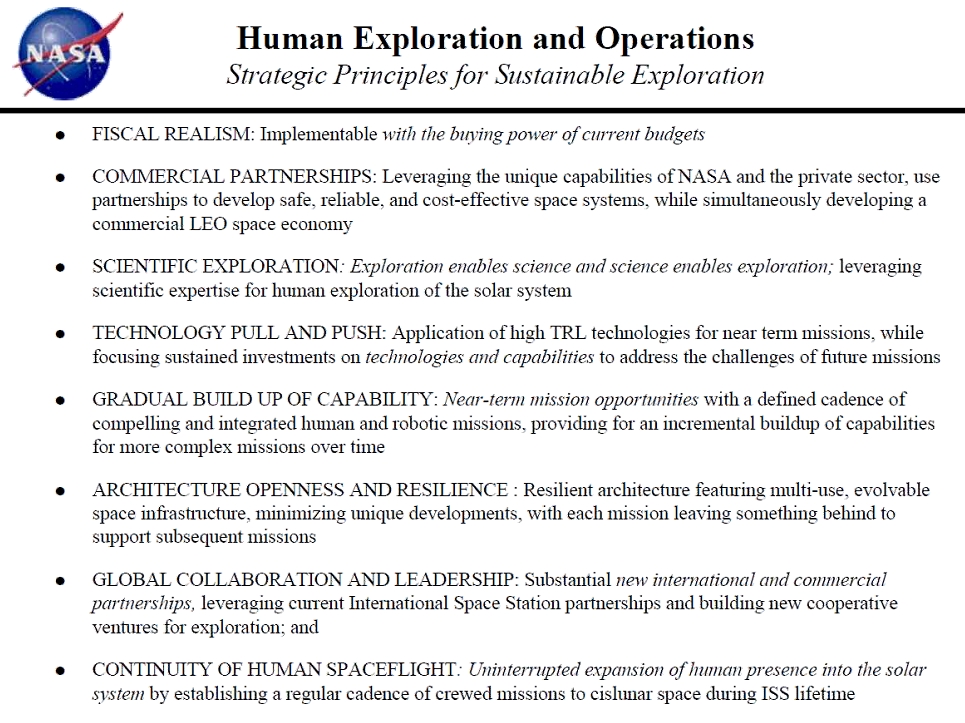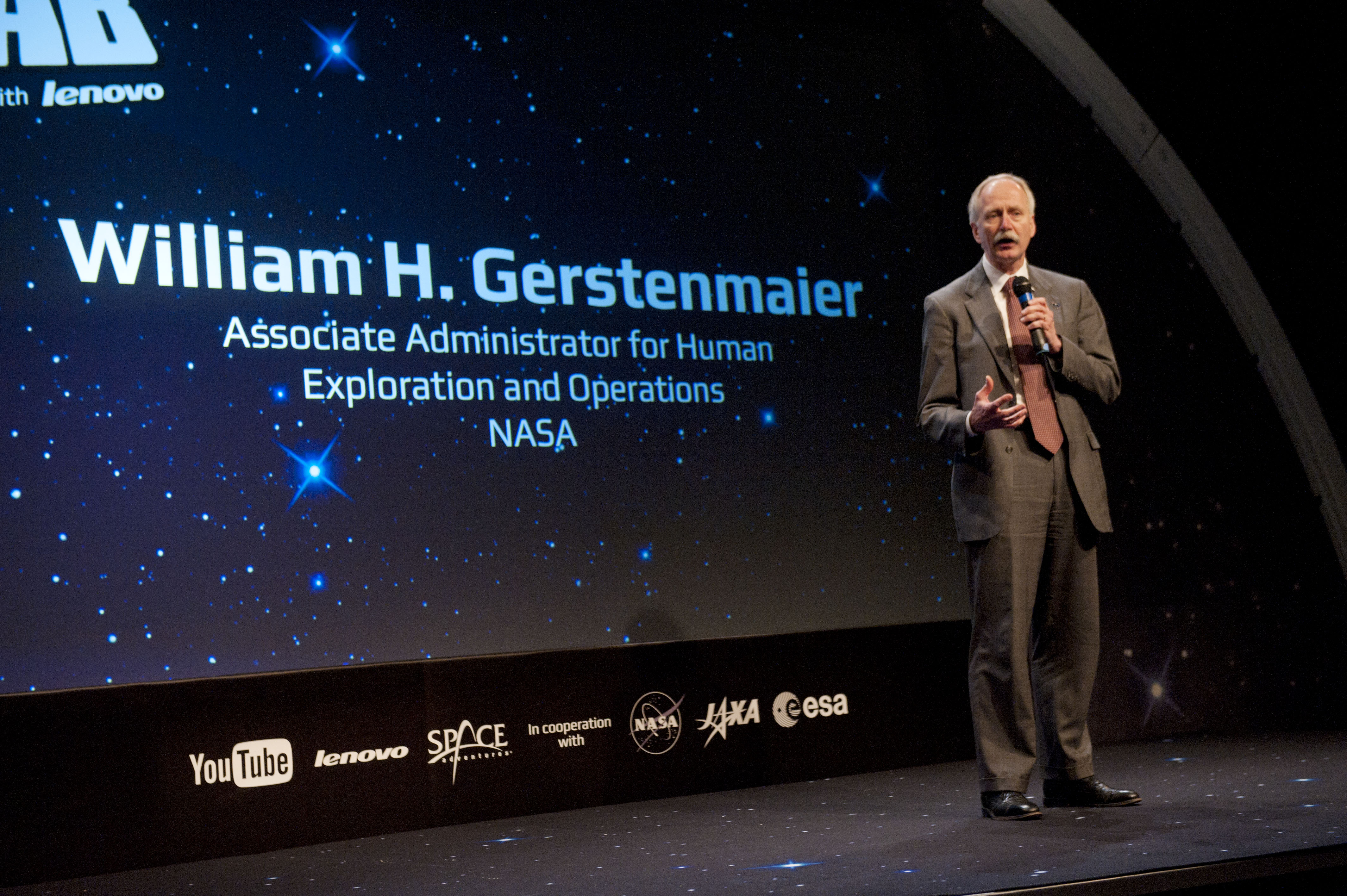
NASA
When it comes to spaceflight, there are crazy optimistic schedules like those Elon Musk sometimes tosses about, and there is just plain crazy. Some recent comments from the chief executive of Boeing, an aerospace company that simultaneously holds the most lucrative contracts in NASA’s exploration, International Space Station, and commercial crew programs, seem to fall into the latter category.
Speaking about NASA’s plans to send humans to Mars at a recent forum, Boeing’s Dennis Muilenburg offered his own opinion. "I anticipate that we will put the first person on Mars in my lifetime,” he said. “I think in this decade, and the first person that gets there is going to be on a Boeing rocket."
This is a preposterous statement. NASA may one day send humans to Mars on a “Boeing rocket”—the Space Launch System—but it will not happen in this decade or the next. In fact, on the present schedule, and because the staggering development costs of Boeing’s rocket will measure in the tens of billions of dollars, NASA seems unlikely to land humans even on the Moon in the 2020s. Mars remains a distant, evanescent dream.
Muilenburg’s rah-rah rhetoric, moreover, is severely undercut by comments from NASA’s chief of human spaceflight. Although a recent remark from Bill Gerstenmaier didn’t get much public attention, it put to bed to any grandiose ideas about NASA’s deep space exploration plans, and especially talk of Mars. During a meeting of the NASA Advisory Council in late March, in reference to planning for human deep space missions, Gerstenmaier said, “We’re going to try and live within flat budgets.”
Pathways report
Gerstenmaier may speak softly, but this was a rather consequential thing to say about a mission to Mars. Effectively, Gerstenmaier said, NASA's efforts to design, develop, and fly deep space missions were now being planned with a flat budget that included no future increases for inflation.

A slide from Gerstenmaier during his NAC presentation. Note the "fiscal realism" bullet point.
NASA
For advocates of robust human exploration, Gerstenmaier's "fiscal realism" is a problem. In 2013 and 2014 a group of outsiders spent about a year studying how NASA might muster the funding—and political and public will—to mount a humans-to-Mars campaign using the Space Launch System rocket. Then they studied its cost and the kind of budget needed to pull it off.
At the end of their research, this National Academies group authored an influential report titled Pathways to Exploration, which examined the future of NASA’s human spaceflight plans. The study authors admittedly struggled to make the numbers work and how best to sustain political will over the 15- to 20-year time frame needed to develop and test Mars technologies—and then fly the missions. Spoiler alert: a budget with modest increases for inflation represented a huge challenge. A flat budget was impossible.

William H. Gerstenmaier oversees human spaceflight for NASA.
Leigh Vogel/Getty Images for YouTube
Asked about Gerstenmaier’s talk about living within flat budgets, a co-chairman of the Pathways report, Cornell University planetary scientist Jonathan Lunine, referred Ars to the central conclusion of the study: “A program of human space exploration beyond low Earth orbit that satisfies the pathway principles defined is not sustainable with a budget that increases only enough to keep pace with inflation.”
“Extremely optimistic”
Assuming an exploration budget that included adjustments for an inflation rate of 2.5 percent, the Pathways report found that NASA could probably land humans on Mars in the 2050s, said Ariel Waldman, a science communicator and co-author of the report. Even this timeline represented an “extremely optimistic” goal, she said. NASA’s recent budget and activities have not changed this calculus. “What we're seeing today is what our 2014 Pathways report foretold in a flat budget scenario,” she added.
Due to its Congressional charter, the Pathways report only considered scenarios in which the Space Launch System rocket carried cargo and astronauts to Mars. One of the challenges with this booster is that it costs so much to fly, NASA can only commit to a single launch a year. However, some of NASA’s mission plans for reaching Mars require seven to nine launches of the big rocket for a single landing.
In interviews with Ars, some of the Pathways study authors said NASA could conceivably send humans to the Moon, and eventually to Mars, for far less money and potentially more quickly by relying more heavily on the private sector, particularly with launch services and reusable rockets. (The Space Launch System is entirely expended after liftoff).One of the Pathways report co-authors, Fordham University history professor Asif Siddiqi, said the study did not take into account public-private partnerships with companies like Blue Origin and SpaceX. “I think those might give some 'wiggle room' for planning, assuming common goals and commensurate funding arrangements,” he said.
Going commercial
Whether NASA has the freedom to move away from planning a Mars mission around the Space Launch System rocket will depend to some extent on the leanings of its new administrator, former Congressman Jim Bridenstine, who was sworn into office on Monday. He comes to the agency after a contentious confirmation process that saw the final vote in the US Senate split along party lines.
Bridenstine has expressed openness toward commercializing aspects of spaceflight, including Earth observation, and his candidacy for administrator was quietly championed by companies such as SpaceX. (Other potential nominees, such as former NASA administrator Michael Griffin, were seen as more hostile to the cheaper launch options that would threaten Boeing’s rocket).
Early in the nomination process, Bridenstine won support from key senators such as Alabama’s Richard Shelby, who strongly back the Space Launch System, so he has must have promised support for the Space Launch System in private meetings. But even so, Bridenstine has the opportunity as administrator to steer cargo delivery contracts toward private launch companies and push for more NASA science missions to fly on cheaper boosters from SpaceX and Blue Origin.
Even this may prove challenging. For example, NASA will power the Space Launch System rocket with four RS-25 engines, the same engines used by the space shuttle. Initially, NASA will use 16 refurbished space shuttle main engines, but when those run out it will use newly manufactured ones by Aerojet Rocketdyne. In late 2015, NASA awarded $1.16 billion to Aerojet to restart production of those old engines.Only three years later, after that massive award, did NASA invite other commercial companies to compete to provide “human-rated, flight-certified, high-performance liquid rocket engines” for the Space Launch System rocket. With that head start, and the start-up funding, no other company can possibly compete with Aerojet for future contracts. The question then, is whether this is the kind of “commercial” opportunities NASA pursues, or whether it will move aggressively toward fixed-price contracts that could dramatically cut exploration costs.
Mars is “off the table”
One of the strongest advocates for human exploration of Mars, five-time astronaut John Grunsfeld, is so far unimpressed with the Trump administration’s approach to space exploration. As a former chief scientist at NASA, Grunsfeld helped place human exploration of Mars as the top-line goal for NASA’s spaceflight program during the last decade.
In its first 16 months, the Trump administration has reset NASA’s goals toward exploring the Moon, and is planning significant investments in a “Gateway” in lunar orbit to serve both as a station for humans to live in deep space and as a way station for vehicles to cycle between the Moon’s surface and orbit.
“The simple answer is that space exploration is not a priority for this administration in spite of the rhetoric,” Grunsfeld said. “Mars is off the table as far as I can tell. The Gateway is the asteroid mission without the asteroid, and is primarily to give the aerospace contractors something to do for the next decade while we wait for some real leadership.”Perhaps Bridenstine will put NASA on a track that leads more directly to human landings on the Moon, or to Mars, but Grunsfeld doesn’t see that happening. He also said that companies like SpaceX, while they may have laudable goals, probably aren’t going to accomplish something as audacious as sending humans to Mars without significant government funding.
NASA responds
After Gerstenmaier’s comments at the advisory council meeting, Ars reached out to NASA for some additional context. A spokeswoman for the agency, Kathryn Hambleton, said the agency is still planning an ambitious exploration program and appreciates President Trump’s support of NASA, and bipartisan backing of NASA.
To meet its exploration goals, she said, NASA has accounted for “significant private investment” in order to stay within the future budget estimates. The space agency also intends to work closely with international partners to develop its exploration plans.
With that said, Hambleton acknowledged that the President’s budget request for fiscal year 2019 through 2023 focuses on the Gateway and only precursor work for robotic landings on the Moon in the mid-2020s, along with some early research for Mars habitation. “Major Mars activity and significant lunar activity are beyond this budget cycle,” she said.Put another way, NASA is now investing almost nothing in designing and building technology actually needed to put humans safely on Mars, or bring them home. It has almost no funding budgeted for this over the next five years.
Given this state of affairs, the notion of a humans-to-Mars mission any time soon seems bizarre. Ars asked a Boeing official for clarification on Muilenburg's prediction of Mars landings this decade. In his response, Boeing spokesman Jerry Drelling did not address this. Rather, he said, "The SLS rocket, built by Boeing and NASA, is currently the only vehicle capable of reaching Mars. Boeing is confident that, if the US Government and NASA make landing humans on Mars a national priority, the SLS rocket can take them there and bring them home."
Read Again NASA budgeting reveals dim hopes for humans going to Mars : https://ift.tt/2KhHKhRBagikan Berita Ini














0 Response to "NASA budgeting reveals dim hopes for humans going to Mars"
Post a Comment